Trees are special. Trees were here long before humans. Fossil remains of the first tree-like plants come from Devonian geological time 400 million years ago (mya for short!). There were huge forests of horsetail trees 300mya. By 200 mya woody trees including monkey-puzzle and ginkgo types had evolved and the beginning of all flowering plants, which include most of our trees. The pine tree families were appearing by 150 mya. Oak trees appeared later about 56 mya. Grasses had evolved and spread rapidly by 40 mya. By about 4 mya there were ancestors of the apes, like chimpanzees and us. But it was not until less than 1 mya that our species evolved.
Ian Mercer, first warden of Slapton Ley Field Centre and head of Dartmoor National Park, used to point out to his students that, in Britain we humans can look down on or at least over the backs of every native species of animal. Only the trees can look down on us to give a sense of humility.
Some of the facts about trees and their associates, are unbelievable. The English oak (Quercus robur) is a wonderful tree..
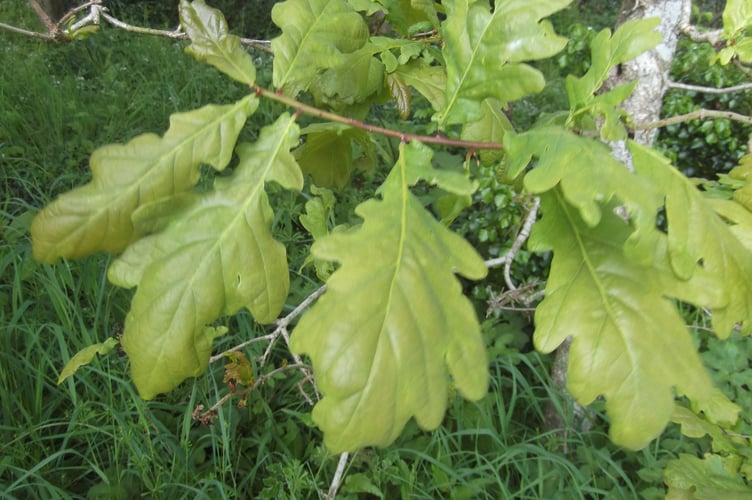
For thousands of years people have noticed that many plants and especially oak trees had peculiar growths on them. We call these galls. Some were like little green apples (oak-apples). Some are little round balls (marble galls). Some are tiny flat discs growing on the backs of the leaves (spangle galls). Some are sticky, furrowed pyramids (knopper galls). Finally some grow hanging on the stems of the flower catkins and look like red or black currants (currant galls). There are many, many more.
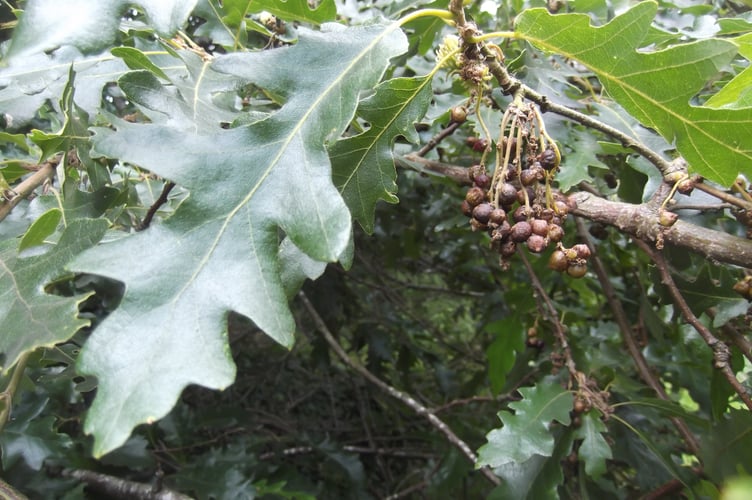
There was a Greek, a pupil of Aristotle called Theophrastus (371 – 286BC ) – yes BC! - who wrote a book about them. The Greeks’ name for them was ‘kekis’ and the study of galls is still called ‘kekidology’.
Margaret Redfern has written a modern book about galls, giving life histories of many of them. One of the most amazing is about the discovery that many oak galls need two species of oak to carry out their life-cycle. The gall-wasps that eventually cause the oak tree to grow a marble gall do not begin their life cycle there. The tiny gall-wasps that burrow their way out of the marble galls in September are all females with fertile eggs. They have to find a Turkey oak, where they lay their eggs into the buds. The Turkey oak grows tiny galls around the eggs, where they remain through the winter. In spring the larvae develop inside the tiny galls and in May and June the second generation of gall-wasps emerge; they are a mixture of males and females. The gall-wasps mate and then
the females find an English oak and lay eggs on its newly bursting buds. The English oaks grow marble galls around the eggs, which hatch out in September to complete the cycle.
Turkey oaks and oaks similar to English oaks both grew in countries around Turkey and Syria and, from mediaeval times, marble galls were collected and exported all over Europe because they were powdered and used in tanning, dyeing and making ink. There were no Turkey oaks in Britain, so there were no marble galls.
Then, in 1735 William Luccombe, from an Exeter plant nursery, introduced Turkey oaks. They became very popular in country estates and by the end of the nineteenth century they had spread widely. From then, starting in Devon, marble galls had come to Britain.
Another unbelievable but true oak story concerns a butterfly and aphid poo.. Paul and I, both volunteers at Andrew’s Wood, were helping Lineke, our leader, counting more flowers in the reserve last week.
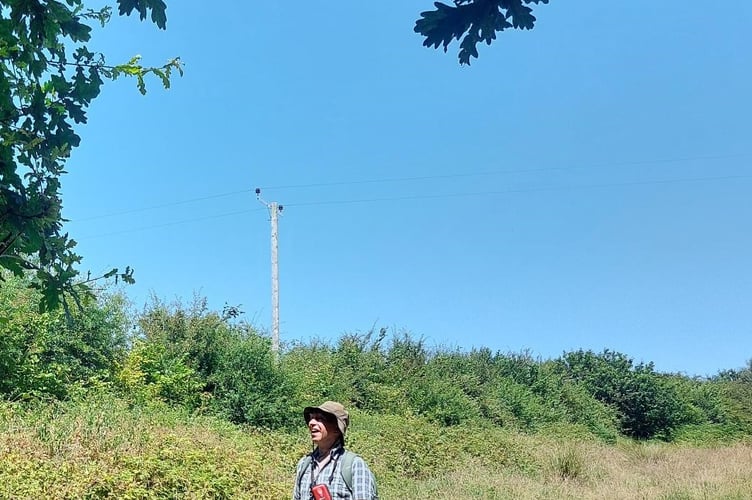
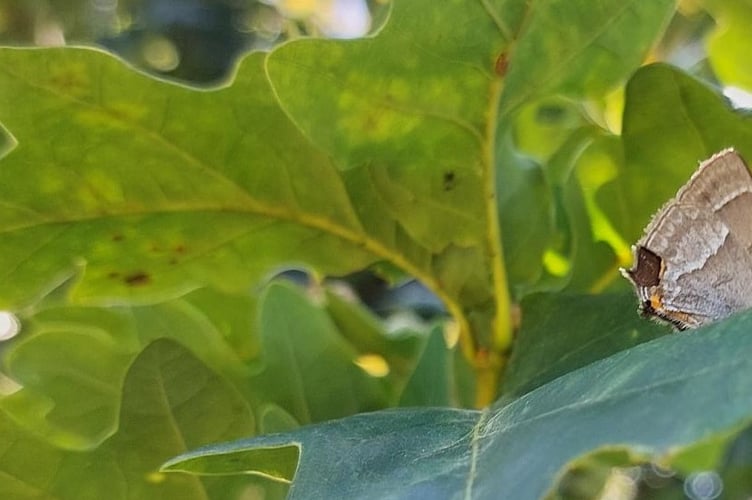
It had been a hot morning and Lineke took us under the shade of an English oak tree for a drink and a sandwich. We sat there looking up at the blue sky through the oak leaves. Amongst the leaves we saw a fluttering movement. There were about a dozen small butterflies that seemed especially attracted to the oak leaves. Lineke watched the butterflies, looking grey on their undersides with glints of purple on the upper wings. She took this photo which proved without doubt that they were purple hairstreaks.
From August to April, purple hairstreaks remain as eggs laid on oak buds. In April and May they hatch into caterpillars which feed on the leaves. When fully grown they drop to the ground. There, in June, at least some of the caterpillars are collected by ants and taken to their nests. There they turn into pupae, before crawling out as winged butterflies. For just a few weeks of heaven in July and August, they sip aphid poo - the ‘honey-dew’ liquid which is their favourite food, they mate, lay their eggs and die.
My last unbelievable story is about a rare species of tree. There is a clump of them just north of Loddiswell. The children called them the Broccoli Trees..
Are you good at naming trees? Can you put the right names to this collection of tree leaves. In alphabetical order they are Ash, Beech, Hawthorn, Hazel, Oak and Sycamore.
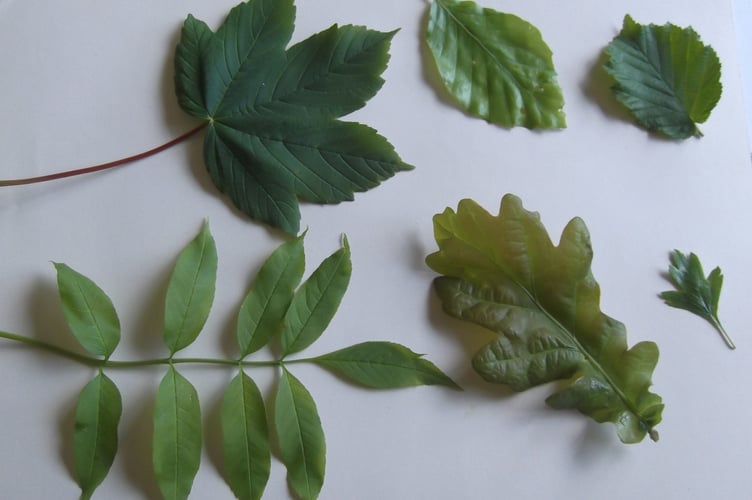
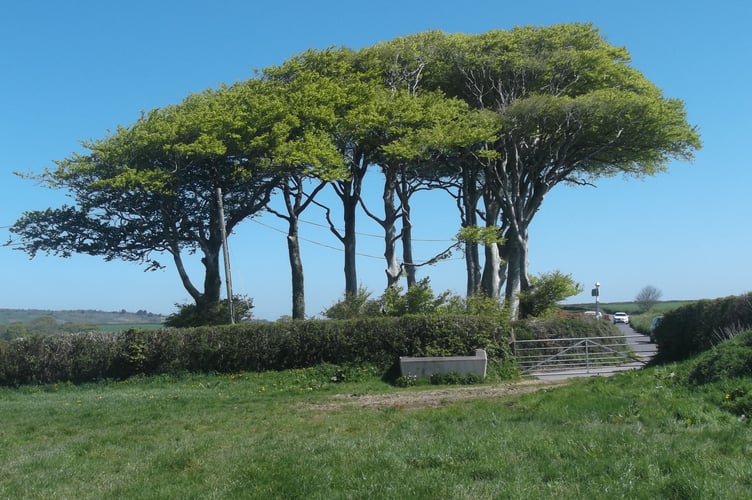
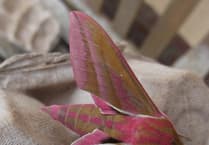

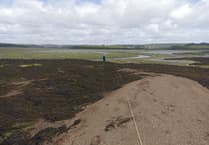

Comments
This article has no comments yet. Be the first to leave a comment.